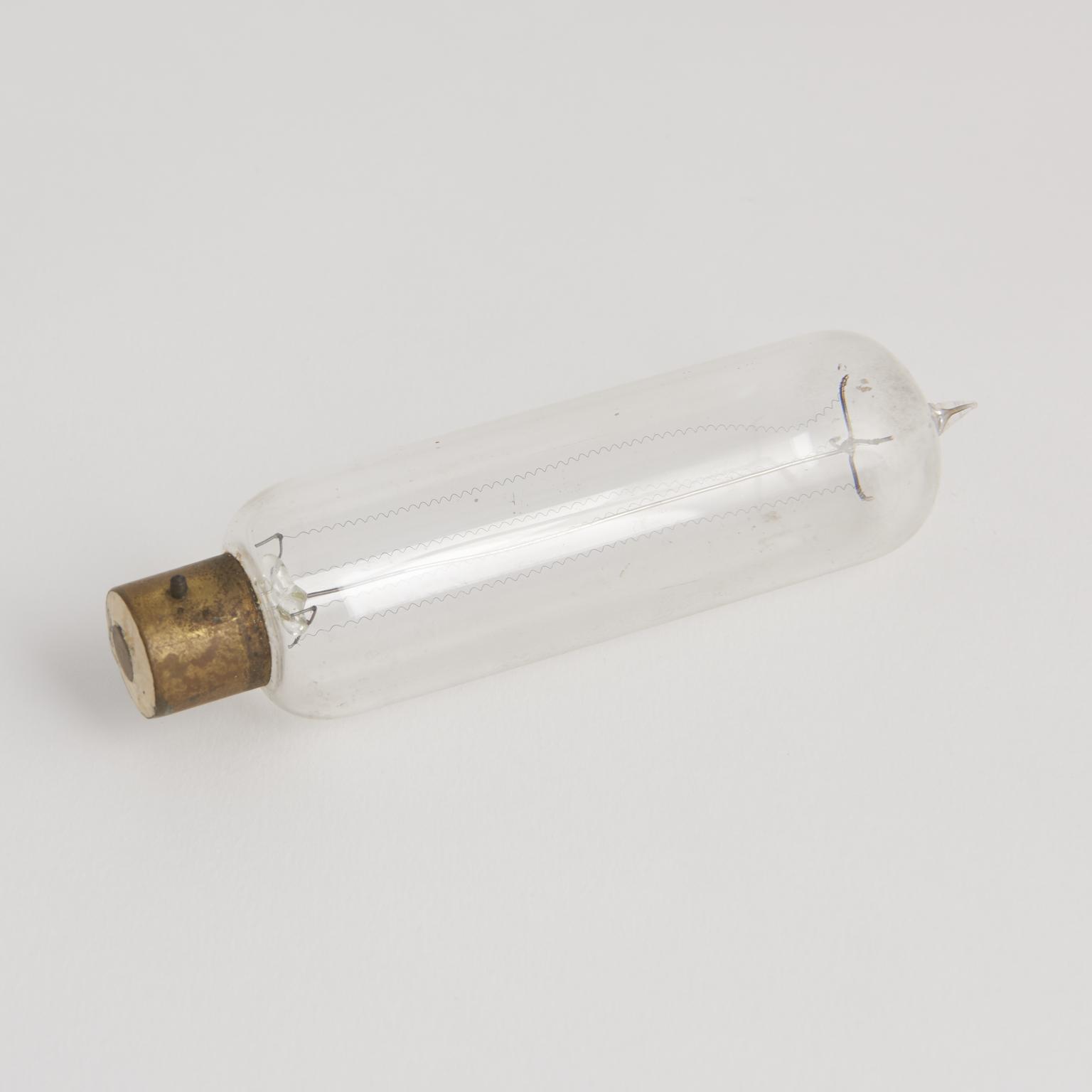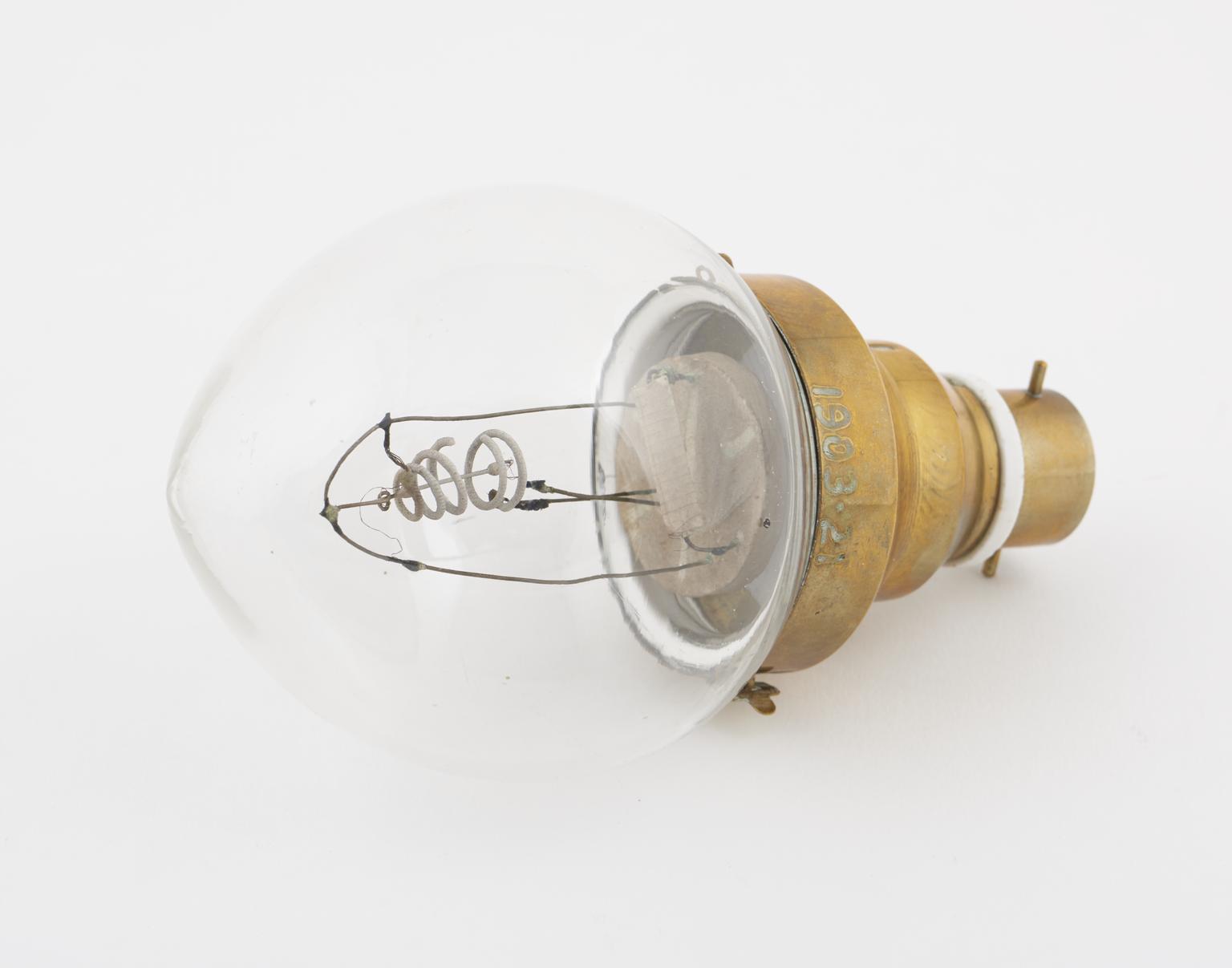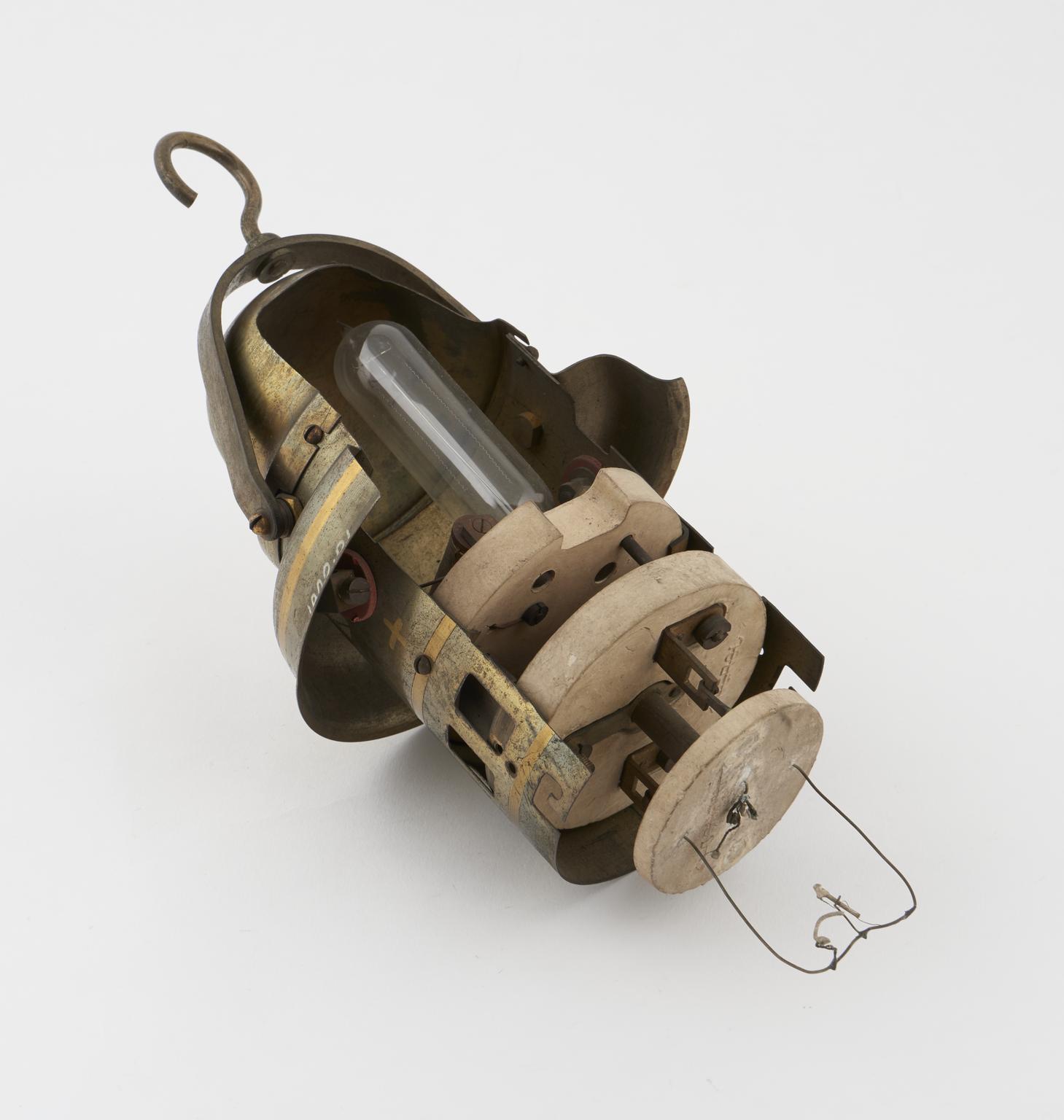
Series of examples illustrating growth of the Nernst Electric lamp
Series of examples illustrating growth of the Nernst Electric lamp
Series of examples illustrating growth of the Nernst Electric lamp
In this lamp, patented in 1897 by Professor W. Nernst, a slender rod of mixture of magnesia and various oxides of certain rare metals is employed as the filament or “glower”, and although protected by a glass globe is not in an exhausted atmosphere. At ordinary temperatures such a rod is a non-conductor of electricity, but when moderately heated, it becomes a conductor of such resistance that it is rendered and maintained incandescent by the current which then passes.
This initial heating of the “glower” to obtain conductivity, was at first accomplished by the aid of a spirit lamp, but it was later more generally attained by the radiation from a surrounding spiral of fine platinum wire embedded in porcelain; when the lamp is switched on, its coil is raised to a red heat by the passage of electricity, but as soon as the glower becomes conductive the coil circuit is broken by an electro-magnet in series with the glower.
Owing to the resistance of the incandescent rod rapidly diminishing with increase of temperature, it was found advisable to protect against fluctuations in voltage by the insertion, in series with the lamp, of a compensating wire of which the resistance rises with increase of temperature.
As the material of the “glower” is not further oxidizable, a vacuum is not necessary around it, and this permits of a detective lamp being restored by the insertion of a new “replacement piece” consisting simply of a porcelain plate carrying the “glower” and its heating spiral.
It was claimed for Nernst lamps that the consumption per candle power was from 1.75 to 2 watts; the replacement pieces, however, required to be renewed after 400 hours use.

Series of examples illustrating growth of the Nernst Electric lamp

Series of examples illustrating growth of the Nernst Electric lamp

Series of examples illustrating growth of the Nernst Electric lamp

Series of examples illustrating growth of the Nernst Electric lamp
Series of examples illustrating growth of the Nernst Electric lamp. Circular concrete/plaster base with bobbin and circular cylinder on top. 8 screws on the bottom of the object and three small round holes. The word 'nerod' is marked on the object with a double ended arrow crossing through the word.